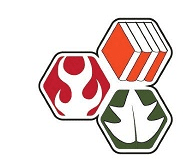Fuels & Fuel Treatments
Webinar recording.
Missoula Fire Sciences Lab Seminar Series
Nov 9 2023
Presenter: Dan Jimenez, RMRS Research Engineer
In the southwestern United States, non-native grass invasions have increased wildfire occurrence in deserts and the likelihood of fire spread to and from other biomes. Wildfires were historically small and infrequent in the warm deserts of western North America, with minimal impact on the desert vegetation. In recent decades, the fire regime has shifted with the spread of non-native grasses. Fires are increasingly burning large areas in desert habitats, largely driven by grassification, the physiognomic conversion of shrublands to grassland by non-native grass invasions. This conversion is especially concentrated at the upper elevational and northern latitudinal boundaries of the Sonoran Desert, which are transition zones to adjacent fire-prone biomes.
Catastrophic wildfires in the western United States pose significant risks to public health, infrastructure, and ecosystems. As these wildfires become more frequent, there is a growing need for a common methodology to identify suitable locations for prescribed burning aimed at mitigating future wildfire impacts to affected populations and ecosystems. This presentation explores the use of atmospheric chemistry transport modeling, satellite observations, and data from land managers to assess the effectiveness of prescribed burning interventions in reducing potential future wildfire smoke exposure. The presenter will offer lessons for states and rural environmental justice communities through a discussion on how implementing preventative prescribed burns in heavily forested areas such as Northern California and the Pacific Northwest may yield substantial net benefits for air quality across the entire western US, while similar interventions in other states would result in comparatively smaller impacts.
Webinar recording.
A practitioner-oriented overview of LANDFIRE with a focus on fuels and how they react to modeling techniques. The subject area of discussion will be the 2022 Cooks Peak fire located in northern New Mexico. This webinar will be technical in its application and may offer insights for both beginner and advanced LANDFIRE users.
Presenters: Tobin Smail, LANDFIRE Next Gen Fuels Lead, USFS Rocky Mountain Research Station Fire Modeling Institute; and Charley Martin, LANDFIRE Fuels, TSSC Contract USGS/KBR
View article.
Here, we quantify observed and projected trends in the frequency and seasonality of western United States prescribed fire days. We find that while ~2 C of global warming by 2060 will reduce such days overall (−17%), particularly during spring (−25%) and summer (−31%), winter (+4%) may increasingly emerge as a comparatively favorable window for prescribed fire especially in northern states.
View article.
This study found prescribed fire used to control woody encroachment had lower maximum spot-fire distances compared to wildfires and, correspondingly, a lower amount of land area at risk to spot-fire occurrence. Under more extreme wildfire scenarios, spot-fire distances were 2 times higher in grasslands, and over 3 times higher in encroached grasslands and Juniperus woodlands compared to fires burned under prescribed fire conditions. Maximum spot-fire distance was 450% greater in Juniperus woodlands compared to grasslands and exposed an additional 14,000 ha of receptive fuels, on average, to spot-fire occurrence within the Loess Canyons Experimental Landscape. This study demonstrates that woody encroachment drastically increases risks associated with wildfire, and that spot fire distances associated with woody encroachment are much lower in prescribed fires used to control woody encroachment compared to wildfires.
View article.
While prescribed fire and mechanical treatments in shrublands experiencing tree expansion restored understory vegetation and prevented continued juniper and pinyon infilling and growth, these fuel treatments also increased modeled surface fire behavior. Thus, management tradeoffs occur between desired future vegetation and wildfire risk after fuel treatments.
View video.
It’s been a weird year so far. The west experienced an exceptionally cool and moist spring, especially in the southern extent of the region. Combined with above average snowpack, fuels stayed moist, and the fire season has had a very slow start. In fact, June saw the lowest area burned since 2000, but despite the slow start over 400 locations in the conterminous US have experienced record temperatures. Moreover, we have seen several weeks of anomalous heat waves, especially in the southwestern US. Yet still the fire season is slower than normal, but fuels are drying out fast.
In this 22-minute webcast, Research Ecologist Dr. Matt Reeves analyzes rangeland fuel conditions across the western US by evaluating the main factors of fuel amount and type, proximity to larger diameter fuel, drought conditions, and level of curing leading to senescent grasses in our simple but transparent hotspot algorithm. All 2022 recordings are located on the Reading the Tea Leaves page.
Webinar recording.
In this LANDFIRE Office Hour, Kim Ernstrom, and Wendy Detwiler, Wildland Fire Management RD&A, Technical Leads IFTDSS (and Josh Hyde: Tech Transfer Specialist, University of Idaho) discuss the basics of using IFTDSS for fuels planning. We also discuss practical examples of how IFTDSS is being used in the field.
View article.
This research used in-depth interviews to explore variable support or opposition to three fuels-reduction projects occurring in the same region of north central Washington State, USA. Results indicate that differential support or opposition to each project stemmed from a unique combination of social factors operating in each locality (e.g., past history with fuels treatments, values for public land, environmental advocacy networks), the relationships that local populations had with agency members conducting each treatment, and the ways that managers engaged populations in the design of each treatment. We used existing frameworks for understanding collaborative potential/environmental conflict and for documenting the influence of local social context on adaptive wildfire actions to help explain emergent lessons about support or opposition to each project.




